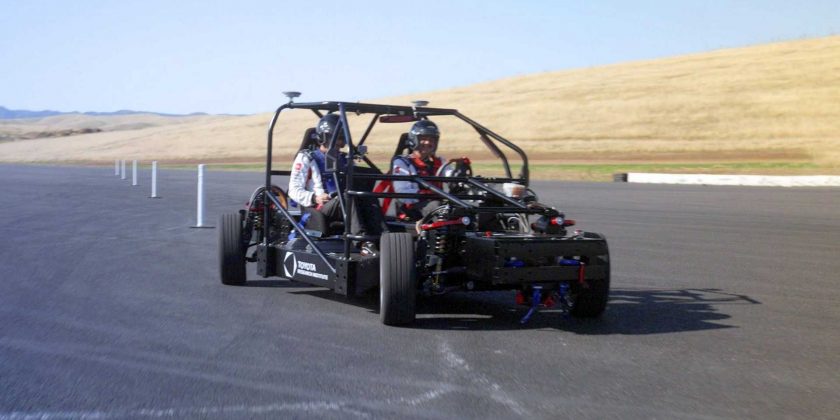Toyota Research Institute (TRI), which is a subsidiary of Toyota, revealed an electric vehicle prototype that has in-wheel motors and four-wheel steering, allowing it to turn around in extremely small spaces and drive diagonally.
Named Global Research Innovation Platform (GRIP), the prototype was shown during the TRI Expo event in Silicon Valley last week and is part of the company’s Human Interactive Driving research, which “amplifies human capabilities and puts the human at the center of the driving experiences.” In other words, there’s still a human behind the steering wheel, but he has an easier job while driving.
Getting back to the GRIP prototype, it can rotate all its wheels in the same direction for the so-called in-phase control, which translates into what GMC calls the “Crab Walk” in the new Hummer EV, or in plain English, driving diagonally. Toyota’s all-electric GRIP can also switch to reverse-phase control and turn the rear wheels in the opposite direction of the front wheels, which allows for really tight turns and ultimately spinning the car around on the spot.
Gallery: Toyota Research Institute GRIP Prototype
It’s very similar to what Hyundai Mobis previewed at the 2023 Consumer Electronics Show (CES) with its e-Corner system fitted to an Ioniq 5 that could rotate its wheels up to 90 degrees.
Hyundai said that its system incorporates an electric motor, electric damper, brake by wire, and steer by wire, and it looks like Toyota came up with a similar approach for the GRIP EV prototype, with the official presentation saying that it features in-hub electric motors, four-wheel steering, and “by-wire systems.”
TRI says that its prototype is merely a test bed for experiments that have to do with four-wheel steering and the interaction between humans and artificial intelligence, so it’s safe to say that we won’t see a production version of the tech showcased in the video embedded above anytime soon. Nevertheless, it may end up in a production Lexus or Toyota model as a simpler system once development is finalized and ready for general use, as is the case sometimes with early prototypes.
Source: Toyota Research Institute via Motor1
Source: Read Full Article

